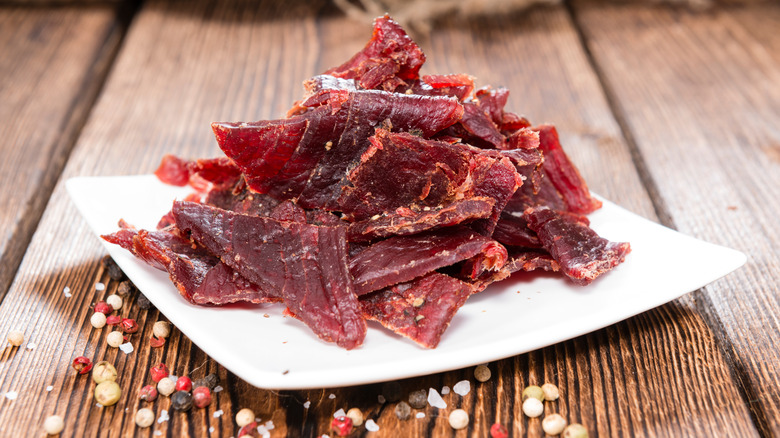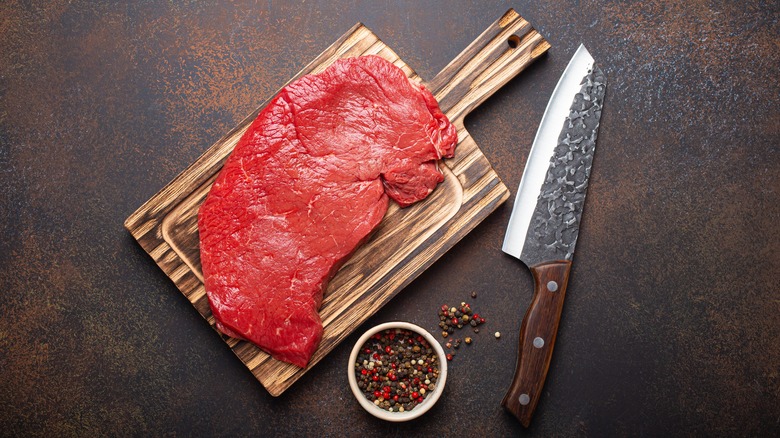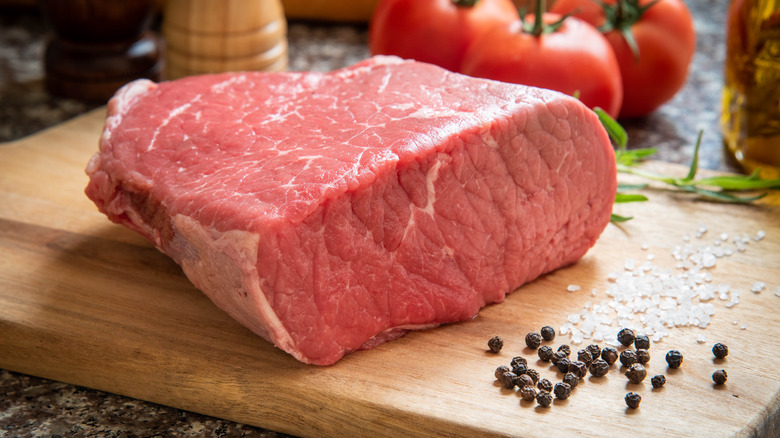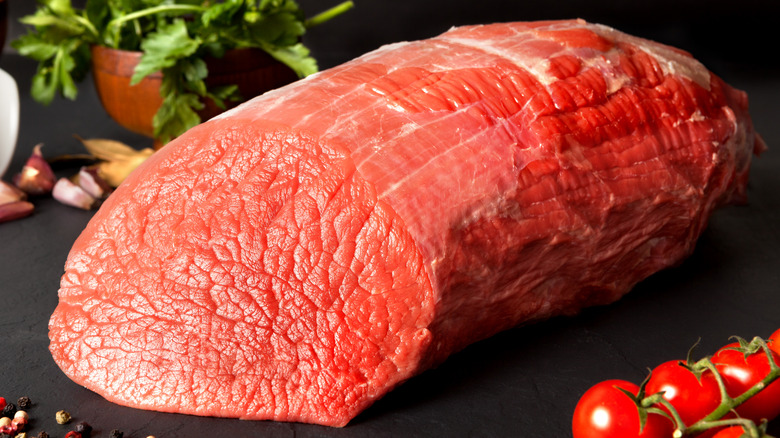The Absolute Best Cuts Of Meat For Top Tier Beef Jerky
Beef jerky is one of humanity's oldest and most beloved snacks. It originated millennia ago as a means of preserving meat and providing nourishing, protein-packed meals on the go. The beef snacks in stores today have rather strayed from this tradition (just look at what's in a Slim Jim), but you can easily make jerky at home with just a few simple ingredients and some patience. Making your own also allows you to control the flavor and tenderness of your snack.
Homemade jerky is a great canvas for culinary exploration because you can marinate the meat in any combination of spices you like. You don't need any expensive or complicated kitchen gadgets, either — a few hours in an oven set to very low heat will do just fine. The only real rule when it comes to making beef jerky is that you have to use a lean cut of beef.
Fatty cuts don't work for jerky because fat cannot be dehydrated, and moisture is conducive to bacterial growth. You need a cut of beef with the least possible amount of fat, and you can find that in the round. The beef round is a hindquarter primal cut from the area around the cow's rump and back legs. The three best cuts for beef jerky all come from the round, and are known as top round, bottom round, and eye of round.
Top round is tops for beef jerky
You might already be familiar with top round under one of its alternative names, "London Broil". This is one of the most popular roast beef cuts, but it is equally well-suited to beef jerky. Top round is also known as the "inside round" because it comes from the inner part of the cow's upper leg. It is not as active as other muscles in the beef round, making it the most tender option for making jerky. However, top round is still very lean and can become tough if not prepared properly. For this reason, it is important to slice the meat very thinly across the grain for maximum tenderness.
Top round is the cut used for most commercial brands of beef jerky. It is popular due to its minimal fat content and strong beefy flavor. It is also the largest of the beef round cuts, and because it is so lean, it is typically inexpensive. Top round provides a lot of beef for your buck, and its naturally pronounced beefiness is an ideal base for any flavorful marinade.
Bottom round is a tough cut, but it can be tamed
Bottom round is also known as "outside round" because it comes from the outside of the rear legs. These muscle fibers stay rigid in supporting the cow's weight, which makes the meat extremely lean and unyielding. Some pros consider this to be the toughest of the three beef round cuts to work with, and it's not as commonly found in stores as top round, but the beefy flavor is strong.
The reason that bottom round is tougher than top round is that the muscle fibers (aka the grain) are much thicker and more prominent. This makes it all the more essential to slice your beef thinly and give it a nice long marinade. There are two main upsides to bottom round, the first being its affordable nature. Secondly, the bottom round has more marbling than the top round – not enough to pose the danger of spoilage that fatty beef cuts like ribeye do, but just enough to boost the flavor up a notch.
Eye of round is an underrated option
Eye of round comes from a long muscle stretching through the center of the round, between the top and bottom cuts. It has a similar shape to a beef tenderloin, but eye of round is much tougher because the muscle works harder than the relaxed tenderloin does. It's tougher than top round too, but as with bottom round jerky, thin slices and a few hours spent soaking in a marinade will do wonders for the texture.
If you're a first-time jerky maker, eye of round is a great choice because it's so easy to work with. The cut is long but fairly narrow, so when you slice it across the grain, you get perfectly sized pieces of beef jerky. This will also ensure that all of your jerky is of uniform size. Eye of round is leaner than bottom round, so you'll hardly need to do any trimming. On the other hand, it is slightly less flavorful than top round, so it benefits from a marinade packed with bold flavors and spice.



